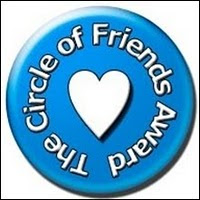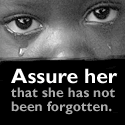One of my favorite book genres is suspense, and I am finding that I like medical suspense. The latest novel in that genre that I have read is ‘Time Scene Investigators: The Influenza Bomb ’ by Paul McCusker and Walt Larimore, MD.
’ by Paul McCusker and Walt Larimore, MD.
Here is the synopsis of this book:
Masses of people are dying from a mysterious flu. While the TSI team searches for a cure, a notorious eco-terrorist group, Return to Earth, uses an influenza bomb to poison the water. It’s a race against time – with the outcome impacting the entire world.
By the time the team discovers the terrorists are using the water supply to infect people, the sickness is spreading worldwide and no one has a cure. When Return to Earth makes off with a mysterious device called the influenza bomb with the intent to destroy all of mankind, Dr. Hutchinson must stop the contamination from being spread before it’s too late.
And here are the authors’ biographies:
Walter L. Larimore, MD, is a noted family physician, award-winning writer, and medical journalist who has hosted the cable television show Ask the Family Doctor on Fox’s Health Network. He lives in Monument, Colorado.
Paul McCusker is a Peabody Award-winning writer and director who has written novels, plays, audio dramas, and musicals for adults and children. He lives in Colorado Springs, Colorado.
These gentlemen previously teamed up for ‘Time Scene Investigators: The Gabon Virus ,’ which dealt with an Ebola virus outbreak in Gabon, Africa.
,’ which dealt with an Ebola virus outbreak in Gabon, Africa.
‘TSI: The Influenza Bomb ’ alternates between the time periods of World War I, World War II, and the present day, and between lots of characters and many locations. The book opens on Monday, March 4, 1918 in Fort Riley, Kansas, where an influenza outbreak has struck. This flu, which became known as the Spanish Flu, went on to kill millions worldwide. In Novosibirsk, Siberia, cases of influenza with surprisingly similar symptoms to those that happened in 1918 are multiplying at an alarming rate. Dr. Susan Hutchinson, a U.S.A.-based employee of the World Health Organization teams up with Anton Pushkin, one of the WHO’s Moscow employees, to get to the bottom of the new outbreak. In Akademgorodok, Siberia, Susan and Anton witness the victims and are briefed on the situation by the medical staff of the Central Clinical Hospital:
’ alternates between the time periods of World War I, World War II, and the present day, and between lots of characters and many locations. The book opens on Monday, March 4, 1918 in Fort Riley, Kansas, where an influenza outbreak has struck. This flu, which became known as the Spanish Flu, went on to kill millions worldwide. In Novosibirsk, Siberia, cases of influenza with surprisingly similar symptoms to those that happened in 1918 are multiplying at an alarming rate. Dr. Susan Hutchinson, a U.S.A.-based employee of the World Health Organization teams up with Anton Pushkin, one of the WHO’s Moscow employees, to get to the bottom of the new outbreak. In Akademgorodok, Siberia, Susan and Anton witness the victims and are briefed on the situation by the medical staff of the Central Clinical Hospital:
She tried to keep her attention forward, but couldn’t avert her gaze from the patients who lined the walls. Some cried out and others curled up, writhing. Blood spotted the sheets, the walls, and the floor.
“What did the doctor say?” Susan asked.
Anton shook his head and said from the corner of his mouth, “He’s never seen anything like it. It’s hitting everything so fast. Symptoms of pneumonia, discoloration of the face ---“
“Discoloration?”
“Brown spots over the cheekbones, even a blue pallor on some. Blood spurting from every orifice. Torture and agony. He said they’re calling it La Grippe.”
Susan stopped, twisting Anton to face her. “La Grippe was the name of the Spanish flu of 1918.” (p. 24)
Other important characters in ‘TSI: The Influenza Bomb ’ are Dr. Mark Carlson and Nora Richards, PhD, who were prominently featured in the first ‘TSI’ book. They prove to be a good team, and they also have romantic interest in each other. And Nora is strong in her faith in God. She hopes for the same for Mark; he is unsure:
’ are Dr. Mark Carlson and Nora Richards, PhD, who were prominently featured in the first ‘TSI’ book. They prove to be a good team, and they also have romantic interest in each other. And Nora is strong in her faith in God. She hopes for the same for Mark; he is unsure:
“…I never had the faith to be a priest.”
She eyed him. “You did. Once. And I think you’ll your faith again.” She turned to look up at the church steeple. “Or maybe it will find you.”
He shrugged and looked at the church. Whatever faith he once professed has died several years ago. And not for the first time, he had to acknowledge just how much he depended on Nora’s faith to shore up his own. Hers was a steady flame to his tiny spark. She seemed to grasp exactly what it was she believed and had integrated it fully into who she was. No separation existed among her spiritual, professional, emotional, or physical lives – they all meshed into a perfect, noncompartmentalized whole. (p. 38)
An interesting family in this story is the Knox family. In the 1918 portions, Lieutenant Colonel Philip Edward Knox, commander of the Health and Sanitation Section of the Emergency Fleet Corporation figures prominently. He had a theory that the Germans, who were fighting against the United States in World War I, were behind the outbreak of the Spanish flu on the Fort Riley KS army base. As is often the case with people who have conspiracy theories, he was looked upon as mentally unstable by many, and many people wanted to discredit his theory. Here is an Knox sharing his theory with journalist Anthony Ziegler:
“Of course you’re speechless,” Knox said. “Not only are the Germans killing us, but also they’re killing us at a rate that will only increase exponentially in the coming weeks and months. The virus seems to infect only military personnel now, but the leap to the civilian population is imminent. I predict we will see death on a scale unknown in the history of humankind. What’s worse, the government knows. In Washington, DC, two German spies, posing as doctors, were caught in a hospital giving influenza germs to sailors. The spies were shot at sunrise. You see? They know what’s at stake, they know all about the conspiracy, but they won’t warn the public.”
Mr. Ziegler decided he was not brave enough to write that story.
An Interpol officer, Martin Duerr, joins Susan’s team. He had been tracking an environmental terrorist group called Return to Earth:
“That’s Return to Earth’s game. They believe that humankind has recklessly forfeited the right to dominance of the earth. If, through terrorism, they can eliminate the human race and return the earth to Mother Nature, then all the better. Whether murdering men or women on a small scale, or entire populations on a large scale, it’s all the same to them. They are the ultimate suicide bombers.” (p. 57)
Cornelius Knox, Philip Knox’s grandson, joins the present day side of the story. He partners up with Dr. Hans Weigel, a geneticist, to write about the Nazi germ-warfare theory. They both were affiliated with Dr. Stefan Maier, the founder of Return to Earth. Duerr, Sara and Mark discuss the implications:
Duerr said, “Think about it. Knox and Wiegel meet and become partners in a theory that the Germans were developing – or had developed – the kind of germ warfare that unleashed the 1918 Spanish flu. Most people considered it a crackpot theory. But what if Maier believed it? What if there was some sort of bomb that could instantly spread La Grippe? How do you think it would serve Return to Earth’s purposes?”
“Perfectly.” A chill ran down Mark’s spine. “Is that what’s going on in Siberia? Maier has set it off somehow?”
“It’s too much of a coincidence otherwise,” Nora said. “The three have some sort of a relationship. Weigel goes to a conference in Novosibirsk and the outbreak follows.” (p. 90)
An interesting element of the story was when Philip Knox had a clandestine meeting with Lillian Higgs, a member of the British Intelligence Services, in 1944 to discuss the Nazis and the influenza bombs:
“Authenticating a cure would require something they don’t have – the right test subjects.”
“Wouldn’t they use laboratory animals?”
“Animals are only effective up to a point,” he said.
“Then….how?”
“You would have to experiment on humans.”
“Humans.” She said the word softly.
“It may be the thing that has saved us. Who would volunteer for such dangerous tests? And without humans to test both the disease and cure on, they can’t use full-scale arms warfare.”
Lillian suddenly went pale, her eyes wide. “The enemy of the German state,” she gasped. “The concentration camps.”
“I’ve heard a little about them, but understood they’re merely work camps…”
Lillian shook her head. “We now have it from credible sources that the Nazis have been systematically rounding up criminals, antisocial, the handicapped – physical as well as mental – homosexuals, communists, socialists, Jews, and gypsies---“
“And putting them to work in factories and keeping them in ghettos,” Knox interjected. “Hitler promised he’d do that years ago.”
“He’s done more than that,” she said. “We’ve heard horrible accounts that they’ve been tortured and experimented upon, in the most cruel and inhumane ways.”
Knox stared at her, the ramifications exploding through his mind like shrapnel. Human subjects – as many as the Nazis would need. He reeled at the thought of what was being done to those people, and the success the Nazis have with their manufactured sickness and its cure. (pp. 123-124)
A subject that comes up often in this book is forgiveness. Here are faithful Nora and skeptical Mark in another one of their theological exchanges:
“You think people should forgive anything?”
“Why not? Think about the Lord’s Prayer. We ask God to forgive us as we forgive others. And remember that Jesus told a parable in which an unmerciful servant, whose master had forgiven him a huge debt, turned around and beat people who owed him much less.”
“But here we are in Hitler Central. You think people should forgive Hitler? The Jews should forgive him?”
“I didn’t say forgiving is easy. But I do believe that when we don’t forgive, it hurts us more than it hurts the one we can’t or won’t forgive.”
“Interesting. How so?”
“Refusing to forgive leads to bitterness, resentment, even hatred. Those things eat us up inside. They destroy us.” She paused, then added, “You know that better than most.”
Mark nodded. After the death of his daughter, he spent the ensuing years blaming himself for what happened. Only recently had he come to believe he could let go of all the self-loathing he’d poured into his heart.” (p. 199)
I also was intrigued by this exchange between Nora and Father Luke, a Catholic priest:
“When I am in pain, when I suffer, God is attempting to do something for my good – to do something in and through me. So, I’ve learned, it’s foolish to waste the pain. I must first forgive he who has harmed me. Then I need to accept the pain, as a gift…to seek to understand it. Last, I must learn how to use the healing of forgiveness and the gift of pain to help others I meet along the way.” (p. 335)
Being a bigger fan of naturopathic remedies that pharmaceutical remedies, I was also happy to see that the Nazis had actually developed a cure for the Spanish flu – a remedy which they called Liebfraumilch – that was composed of root and herbs such as Tibetan ginseng and Indian echinacea. Here, two of the team members, Digger and Georgina, share with Mark what they learned:
“The Nazis concocted a cure out of Indian echinacea, European alder, biscuit root, bloodroot, black coneflower, Tibetan ginseng, and even touch-me-not. Just a bunch of root and herbs!”
“You’re kidding.”
“All herbs that have shown at least some effectiveness in treating influenza or the common cold. And, apparently, the Germans have a long tradition with them.”
“You mean we risked our lives for a bunch of root juice?” Mark moaned.
“Call it what you want,” Digger said, “but researchers from Russia, China, and Germany have found that the extract components possess what they call immunostimulant properties. And, believe it or not, studies actually show they increase the ability of white blood cells to fight the virus.”
“Great,” Mark said. “That makes me feel much better.”
“And” – Georgina spoke as if she’d been waiting for the chance to interrupt -- “I found Nazi documents claiming the recipe was taken from some of the early nineteenth century’s best-known German herbalists and tested on concentration camp prisoners. They refined the recipe based on results and hit the mother lode with Liebfraumilch. They found it virtually one hundred percent effective at rapidly reducing symptoms of the virus, and preventing fatalities.” (p. 417)
I was on the edge of my seat throughout the reading of this book, and I had a hard time putting it down! There is so much realism in this book that the possibility of this type of terrorism could come to pass. The human mind can conceive so much evil – Hitler and the Nazis and the 911 terrorists being perfect examples – that I no longer am surprised at what the human heart can contemplate. I pray that this sort of thing can never happen in the real world. Not only was there was the exciting storyline, but these wonderful authors included the Christian theme of forgiveness, which is quite necessary in a story full of Nazis and environmental terrorists. I look forward to the next novel in the ‘Time Scene Investigators’ series, and may have to seek out the first one!
You can order this book here .
.
This book was published by Howard Book, a division of Simon and Schuster, and provided by Glass Road Public Relations for review purposes.





























.jpg)







No comments:
Post a Comment